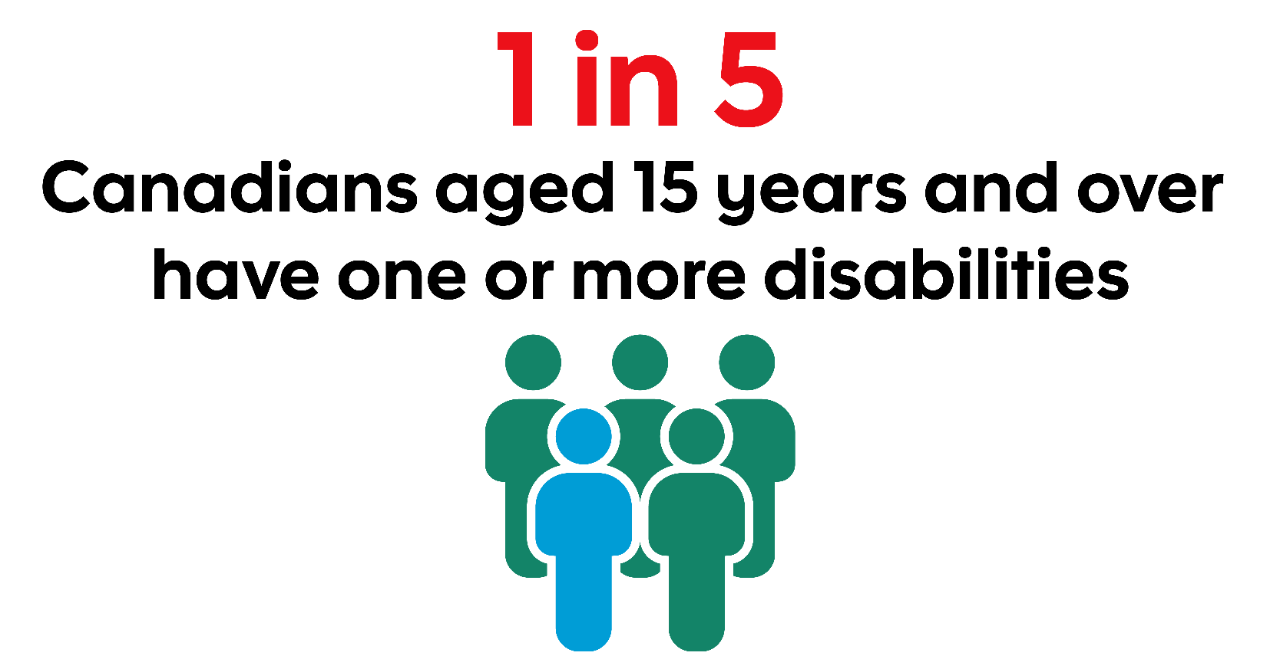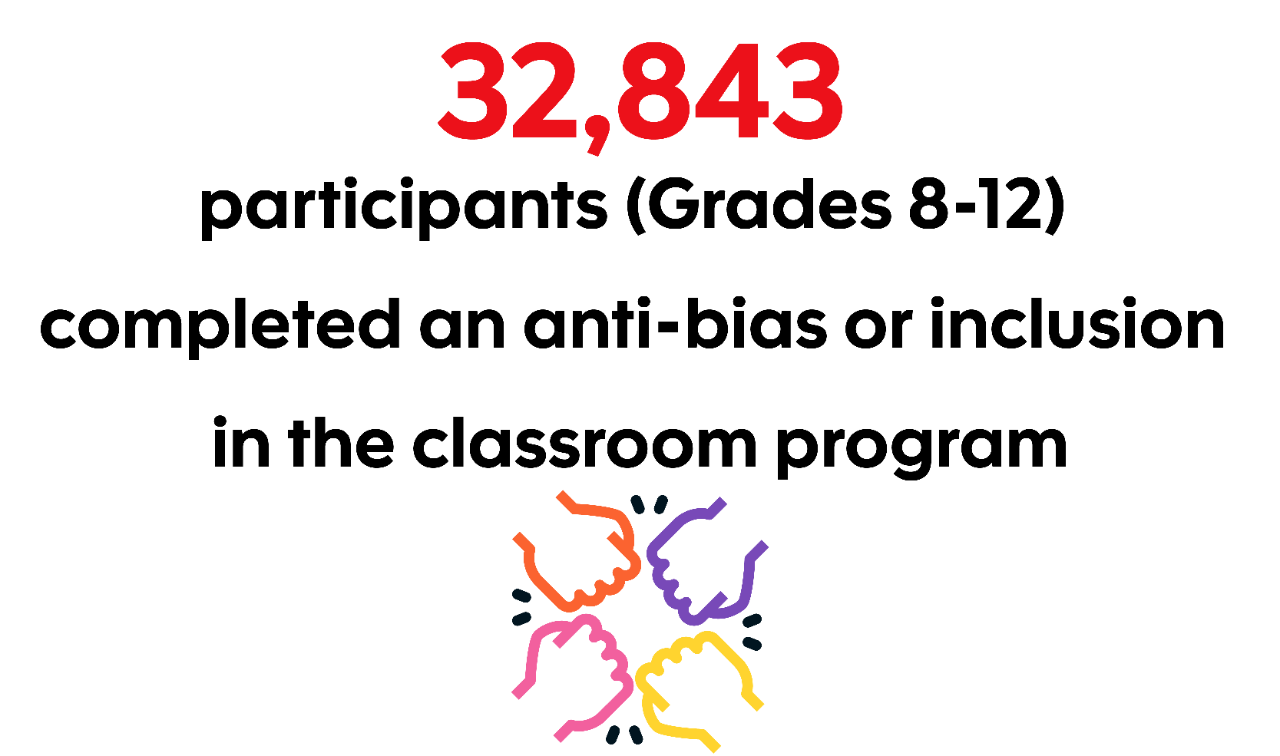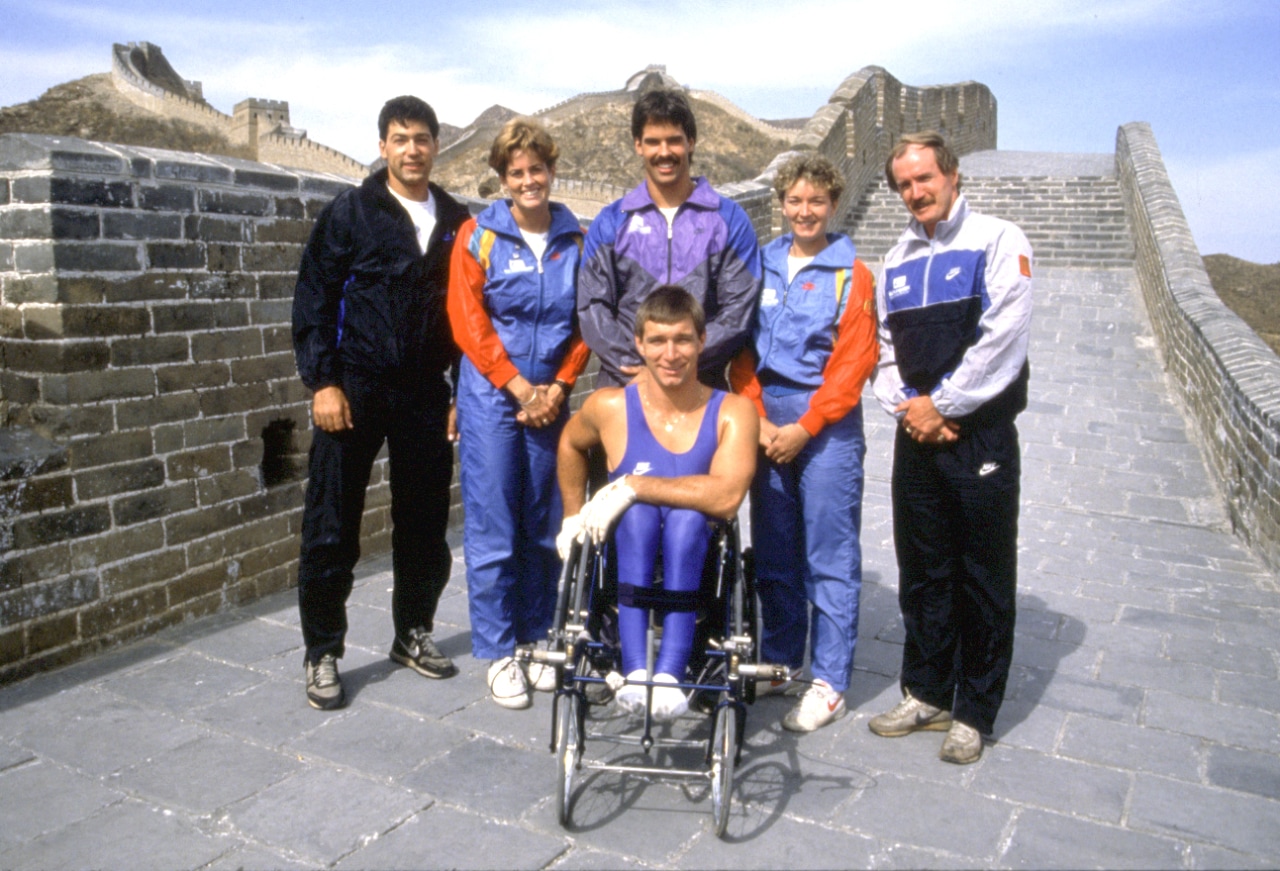Photo: Jackie Silver, an ambassador for the Rick Hansen Foundation, educating students about disability and the importance of accessibility while inspiring them with her story. (Photo supplied by the foundation)
The Rick Hansen Foundation (RHF) started as a non-profit to raise awareness on accessibility and finding cures for spinal cord injuries. Now, more than three decades since the Paralympian’s famous Man In Motion World Tour, the foundation it sparked has expanded far beyond its initial focus.
In 1973, Hansen was in a car accident and thrown from the back of a pickup truck, paralyzing him from the waist down. He later became a Paralympian, winning 19 international wheelchair marathons, including three world championships.
His namesake foundation was formed in 1988 after Hansen's tour, which galvanized international headlines and saw him wheeling over 40,000 kilometres through 34 countries from March 1985 to May 1987 to change the way people with physical disabilities are perceived.
Today, Hansen wants people to think more broadly about disability, beyond the conventional stereotypes.
“The symbol of disability isn't just one of a stick man in a wheelchair,” he said during a recent ScotiaRISE summit, featuring speakers and panels on the issue of building accessible communities and workplaces.
“It’s actually people who have vision, hearing, and mobility challenges. Yes, and people in chairs. But it is also about people who have cognitive or mental health challenges.”
Disabilities on the rise in Canada
According to Statistics Canada, one in five Canadians aged 15 years and over have one or more disabilities, and this figure is expected to reach one in four due to an aging population.
Disabilities related to pain (15%), flexibility (10%), mobility (10%), and mental health (7%) were the most common among Canadians 15 and older, followed by seeing (5%), hearing (5%), dexterity (5%), learning (4%) and memory (4%), Statistics Canada says.
Canadians with disabilities also are less likely to be employed and far more susceptible to poverty. Statistics Canada’s figures show that the employment rate of Canadians aged 25 to 64 with disabilities was 59%, compared with 80% for Canadians without a disability.
Additionally, about 12% of Canadians with disabilities report having been refused a job in the previous five years because of their condition.
Hansen also added that people who are dealing with cancer or diabetes should be included as part of a broader view around disability.

Source: Statistics Canada
Knowing what kind of challenges people face is vital especially when the World Health Organization estimates that there are 1.3 billion people globally with a disability, making them about 16% of the world’s population.
“One of the biggest barriers is awareness that this is a big deal,” said Hansen said during his keynote presentation. “And we all face barriers,” he added.
ScotiaRISE supporting the RHF School Program
The organization has a long-standing commitment to working with schools to help improve accessibility and inclusion for young people with disabilities, and most importantly widen perceptions of the issue itself.
In early 2023, the foundation announced its renewed three-year partnership with ScotiaRISE, Scotiabank's 10-year, $500-million initiative to promote economic resilience among disadvantaged groups. ScotiaRISE's $600,000 investment allows The Rick Hansen Foundation School Program to provide educators and schools with the tools and resources necessary to improve accessibility and inclusion in schools and communities across Canada.
“Fostering an inclusive and accessible environment in schools is key for students to learn and thrive,” says Maria Saros, Vice President & Global Head, Social Impact at Scotiabank.
“We are proud to support the Rick Hansen Foundation’s School Program, which is making a significant positive impact in schools, contributing to a cultural shift toward a more inclusive Canada.”
The foundation offers several initiatives for students as part of the School Program, including mentoring youth to become accessibility and inclusion advocates through its Youth Leadership Committee, Difference Maker of the Year Awards, providing no-charge downloadable educational resources in English and French, including video and storytelling formats, for students from Kindergarten to Grade 12, and offering engaging presentations by RHF Ambassadors with lived experience.

Source: Rick Hansen Foundation Stewardship report, August 2023
Shifting disability perceptions through stories
Through the non-profit’s Ambassador presentations, those who have experienced an injury or have other forms of disabilities are invited to share their experiences in schools. RHF Ambassadors engage with students from Kindergarten to Grade 12 and speak about their personal experiences, creating space for an open conversation about what it is like to be living with a disability.
"When the ambassadors tell their stories, they're giving back. They're leaving a positive impact on people's lives, people's perceptions, and people's attitudes," said Mike Reid, Vice-President of Resource Development at the Rick Hansen Foundation and one of the original six members on the Man In Motion World Tour.
During the 2022-2023 year, about 120 presentations were made by RHF Ambassadors, reaching more than 19,000 students; 212 educators received training through professional development workshops as well.

Source: The Rick Hansen Foundation Stewardship report, August 2023
In the wake of Hansen's tour, Canada began its National AccessAbility Week (NAAW), and curb cuts — modifications to make sidewalk curbs easier for wheelchairs to navigate — started appearing. But people with disabilities still faced many mobility challenges due to the way buildings and infrastructure were being built. Barriers in the built environment are some of the most fundamental barriers that people with disabilities face.
"So, we got the best and the brightest in universal design” and created an accessibility certification program in 2016 to prompt businesses to understand their level of accessibility and know where to improve, Reid said.
Neurodiversity inclusion
The foundation is now readying to roll out the 4.0 version of its Rick Hansen Foundation Accessibility Certification™ (RHFAC) Rating Survey in January, which rates the meaningful accessibility of buildings from a people centric perspective.
"We're actually including neurodiversity for the first time, along with the other physical disabilities," said Reid.
Some of the additional criteria to consider when evaluating a site for neurodiversity inclusion will include the incorporation of sensory rooms to minimize stimulation, and the use of distinguishable landmarks to help with memory and spatial orientation.
The v4.0 Rating Survey will also take into account spaces that provide interactive and stimulating elements, such as the availability of sensory-friendly toys, tools, and other resources, the foundation said.
So far, over 1,750 Sites, from the Vancouver International Airport to the Canadian Chamber of Commerce, have achieved certification. In late 2022, one of Canada's most iconic landmarks — the CN Tower — achieved RHF Accessibility Gold Certification, considered the highest level of certification from the foundation.
Overall, the Rick Hansen Foundation has come a long way in pushing for change for people with all kinds of disabilities.
It is part of the Valuable 500, the global business partnership of 500 companies working together to end disability exclusion.
But there is still more work to do, Reid said.
"Once every person with a disability in this world can go anywhere at any time for any reason, then I'd say we've accomplished our mission."
Memories of the Man in Motion World Tour
When asked about his favourite memory of Rick Hansen’s legendary Man In Motion World Tour, Mike Reid points to the spring of 1986 in China. Reid, one of the original six members on the tour that travelled through 34 countries between 1985 and 1987, said that stop left a "profound impact" on him.
There, Hansen wheeled up the Great Wall of China. En route to Tianjin and then Shanghai, he was greeted by crowds of thousands of people yelling and throwing flowers. Reid, who is now Vice-President of Resource Development for the Rick Hansen Foundation, saw the impact they were making in raising awareness about the potential of people with disabilities.
"It was the turning point of our tour because Canadians saw that on television," said Reid, who had run alongside Rick to ensure his safety, as well as that of the people who crowded around him.
The team's trip served as inspiration for China at a top level.
The Rick Hansen Foundation was founded in 1988, and the China Disabled Persons Federation was established in Beijing that same year, he added.
"All the employees of all the state-owned enterprises came out to watch us," Reid remembered. "And we helped the China Disabled Persons Federation start to build itself over there."

Photo: Rick Hansen (in front) with his team (left to right): Don Alder, Amanda Hansen, Mike Reid, Nancy Thompson, and Lee Gibson during the Man in Motion World Tour at the Great Wall of China in 1986. (Credit: Rick Hansen Foundation)

